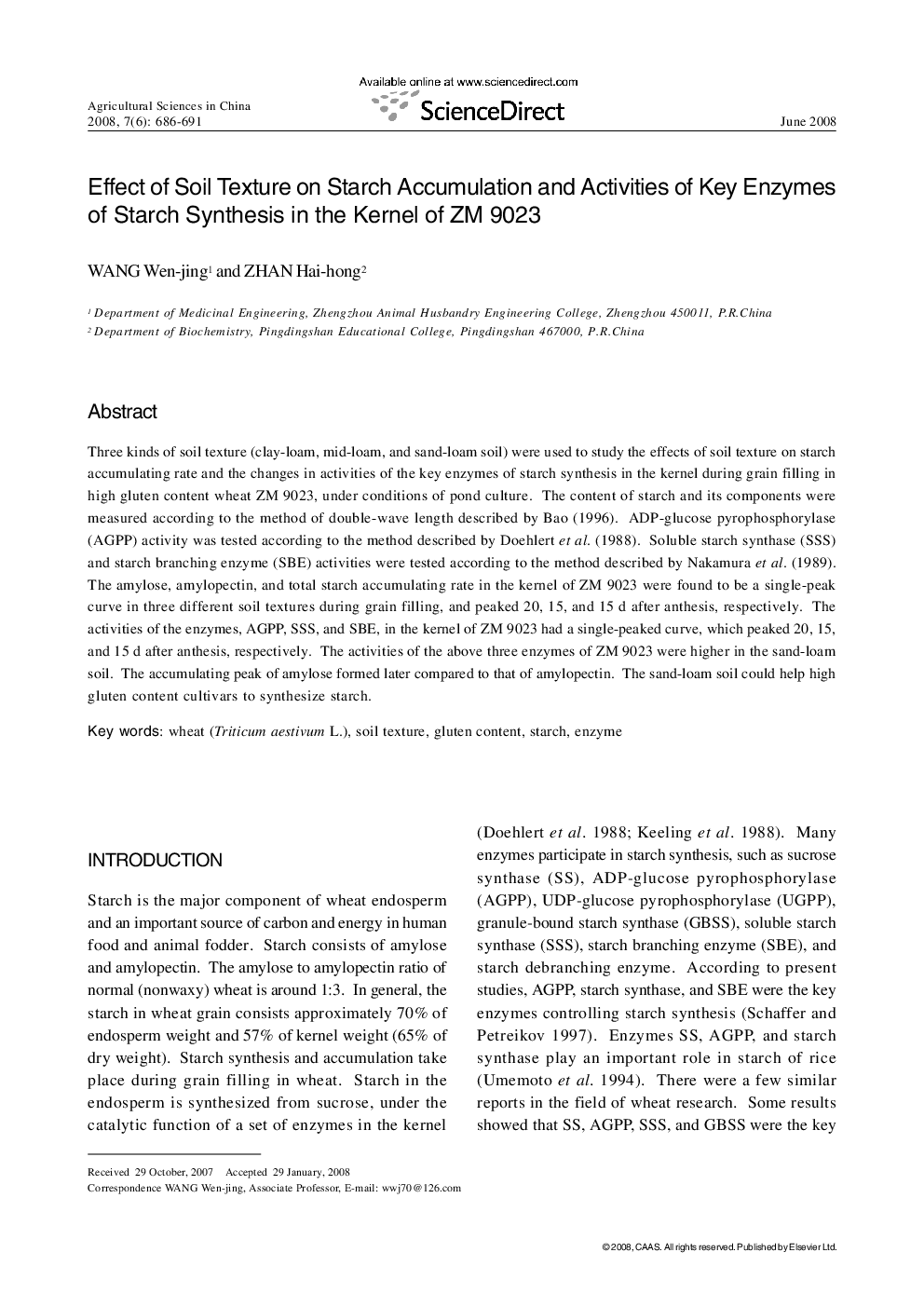| Article ID | Journal | Published Year | Pages | File Type |
|---|---|---|---|---|
| 4490584 | Agricultural Sciences in China | 2008 | 6 Pages |
Three kinds of soil texture (clay-loam, mid-loam, and sand-loam soil) were used to study the effects of soil texture on starch accumulating rate and the changes in activities of the key enzymes of starch synthesis in the kernel during grain filling in high gluten content wheat ZM 9023, under conditions of pond culture. The content of starch and its components were measured according to the method of double-wave length described by Bao (1996). ADP-glucose pyrophosphorylase (AGPP) activity was tested according to the method described by Doehlert et al. (1988). Soluble starch synthase (SSS) and starch branching enzyme (SBE) activities were tested according to the method described by Nakamura et al. (1989). The amylose, amylopectin, and total starch accumulating rate in the kernel of ZM 9023 were found to be a single-peak curve in three different soil textures during grain filling, and peaked 20, 15, and 15 d after anthesis, respectively. The activities of the enzymes, AGPP, SSS, and SBE, in the kernel of ZM 9023 had a single-peaked curve, which peaked 20, 15, and 15 d after anthesis, respectively. The activities of the above three enzymes of ZM 9023 were higher in the sand-loam soil. The accumulating peak of amylose formed later compared to that of amylopectin. The sand-loam soil could help high gluten content cultivars to synthesize starch.
